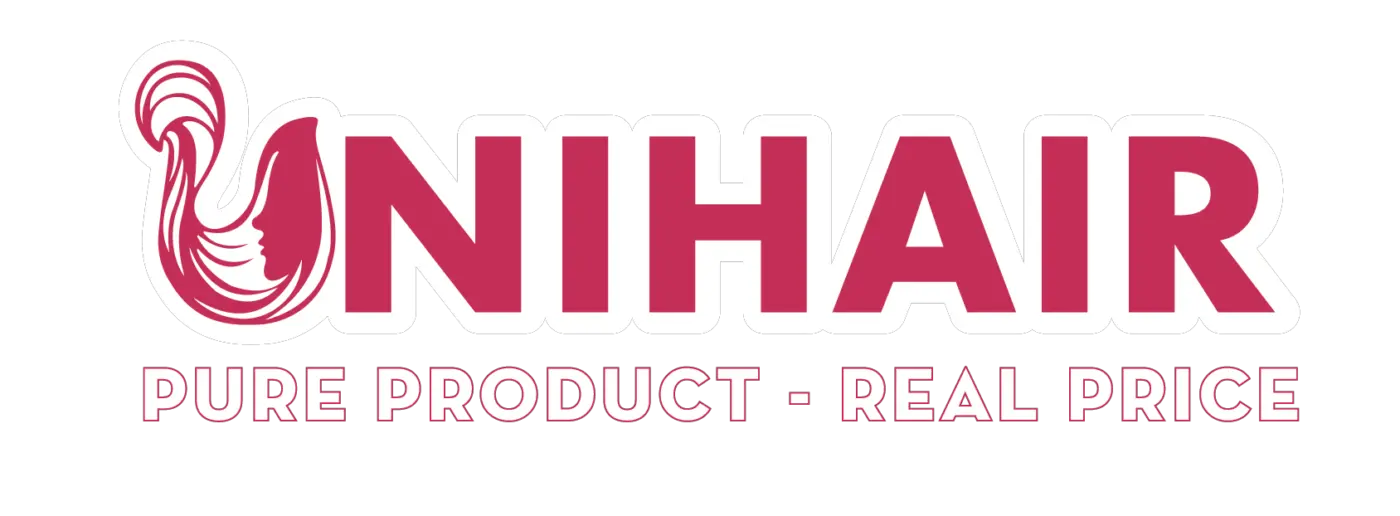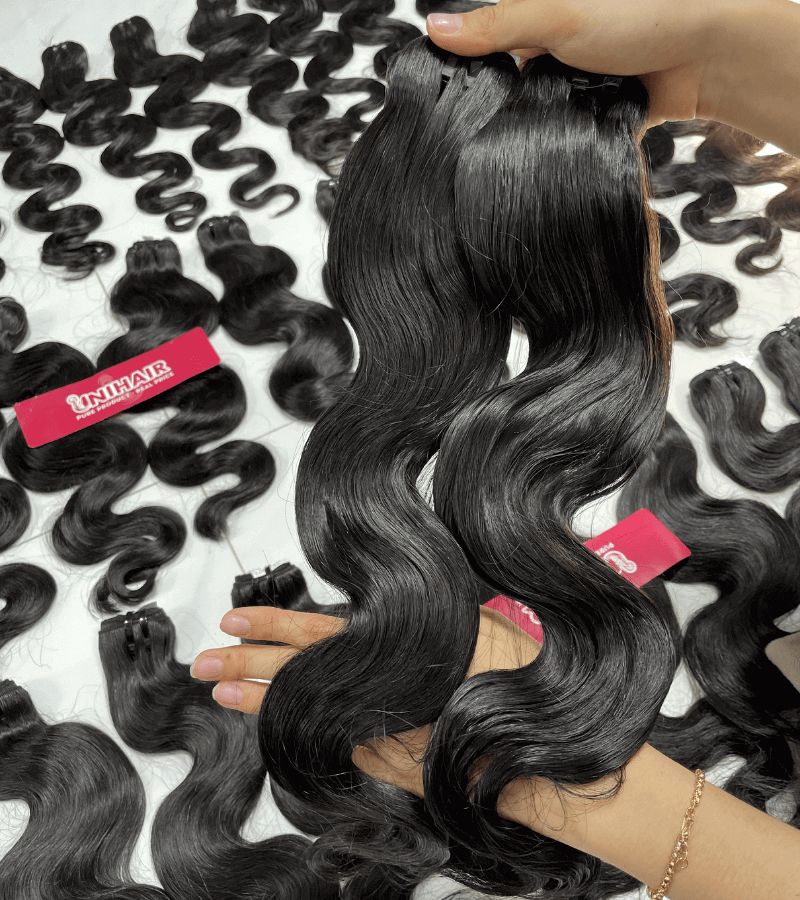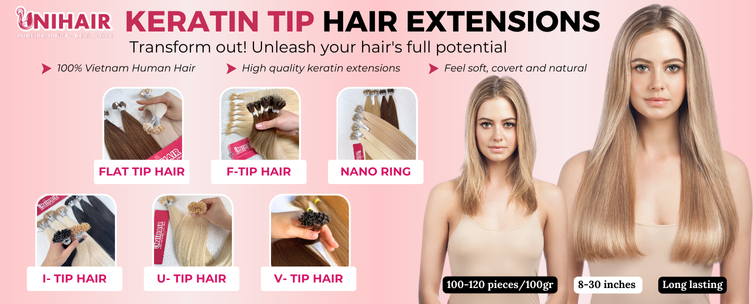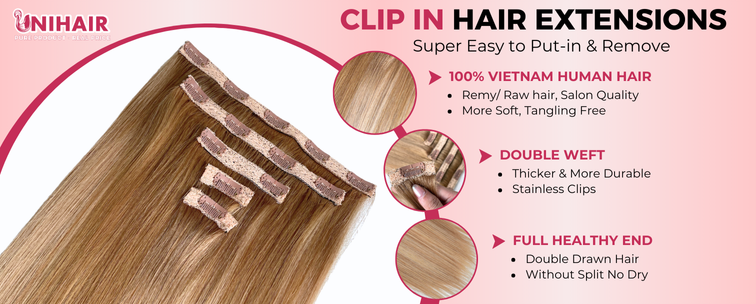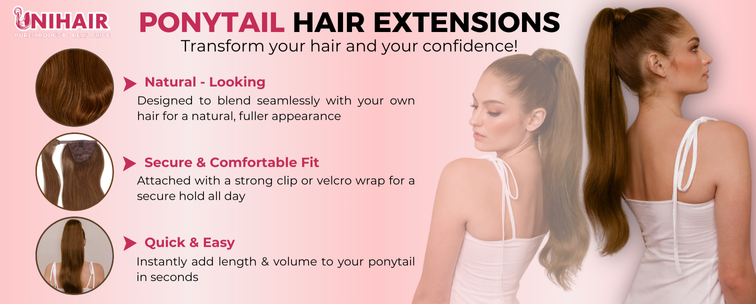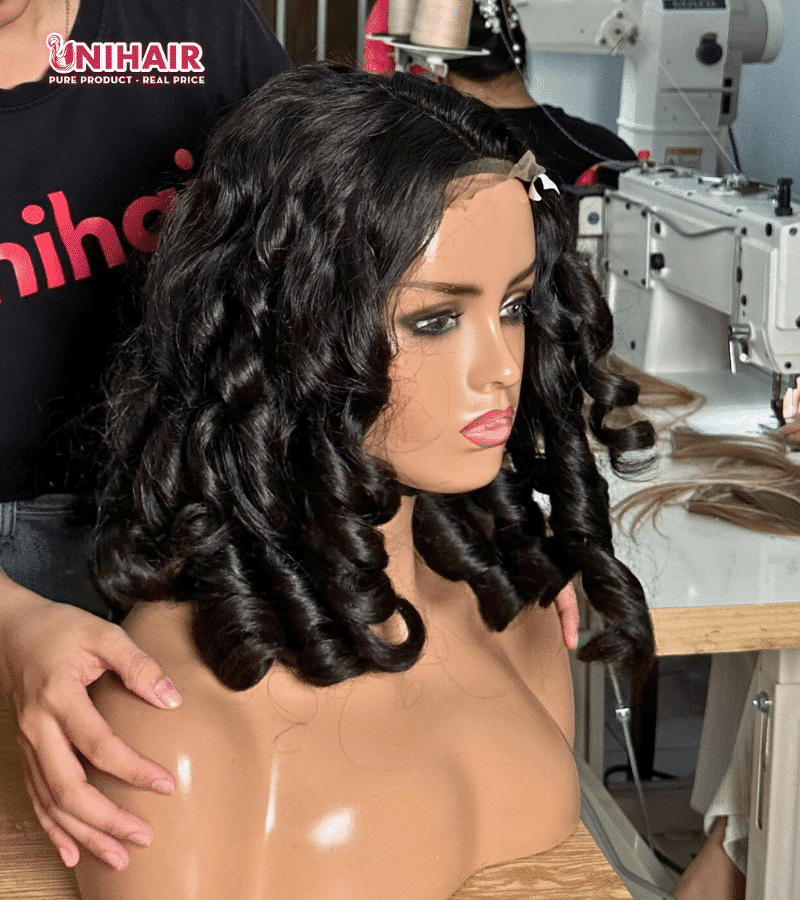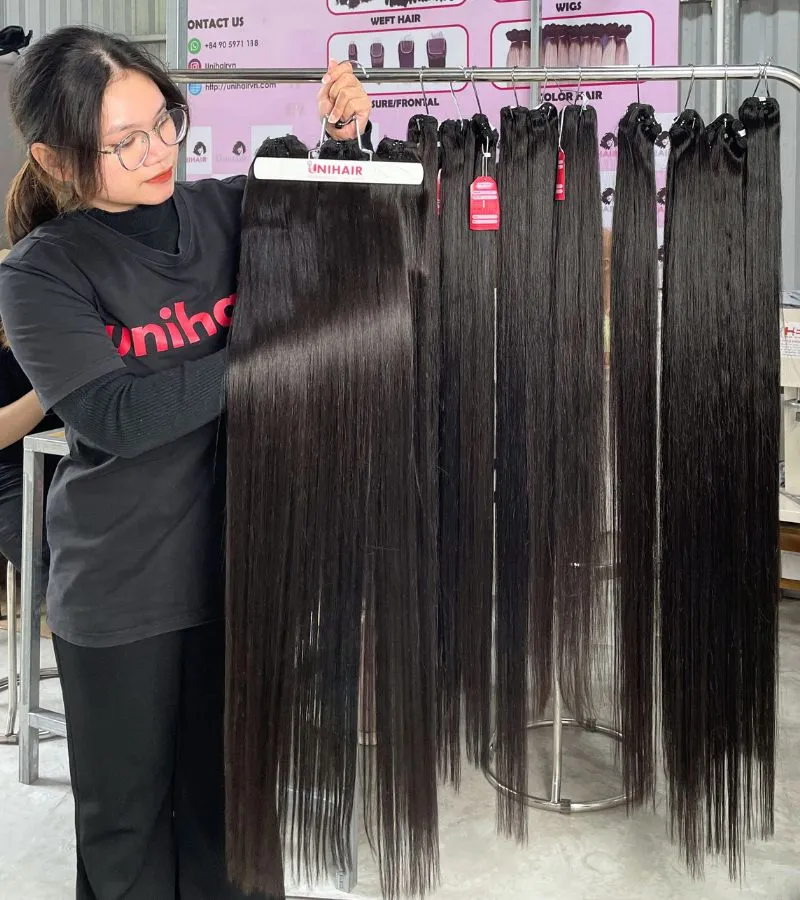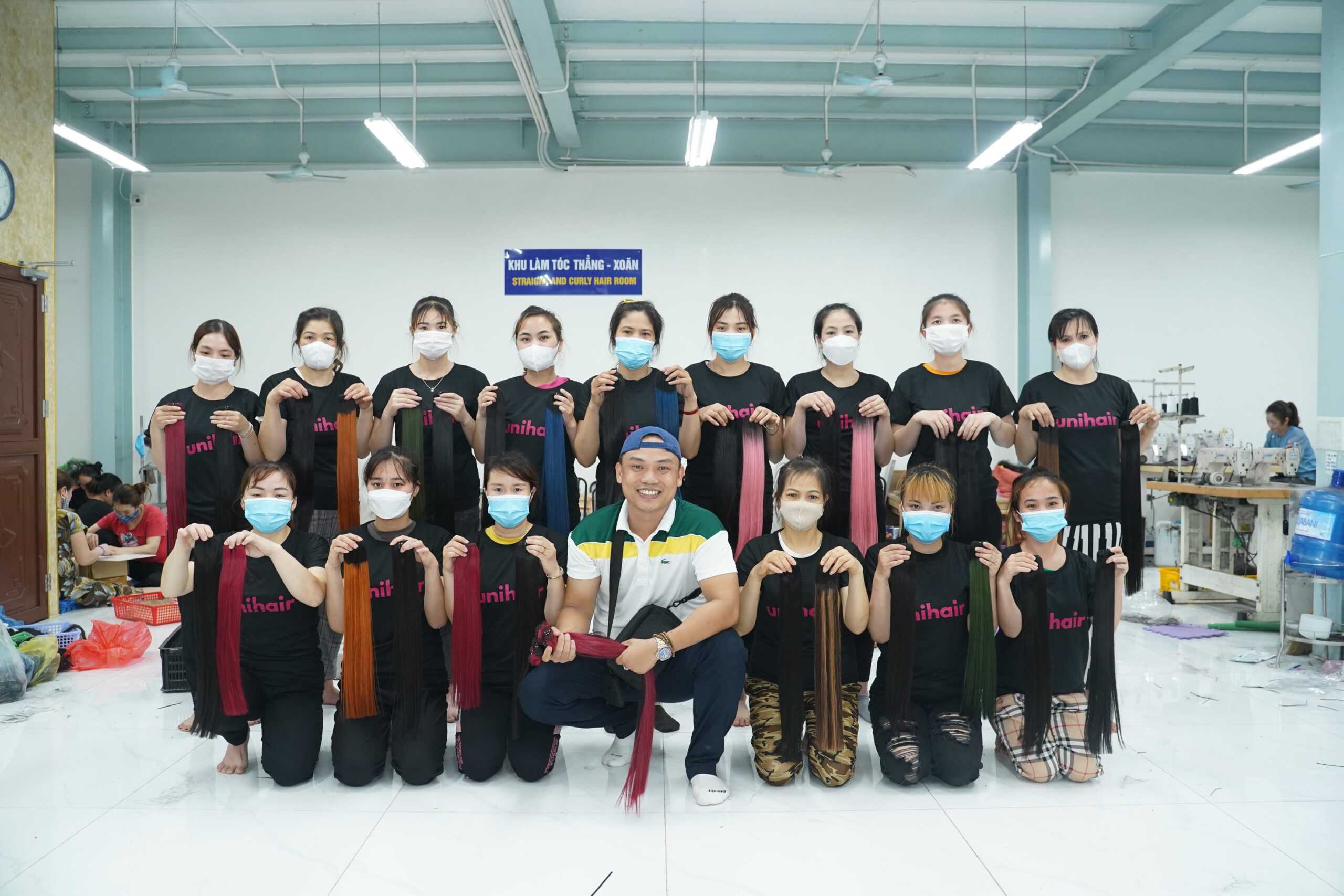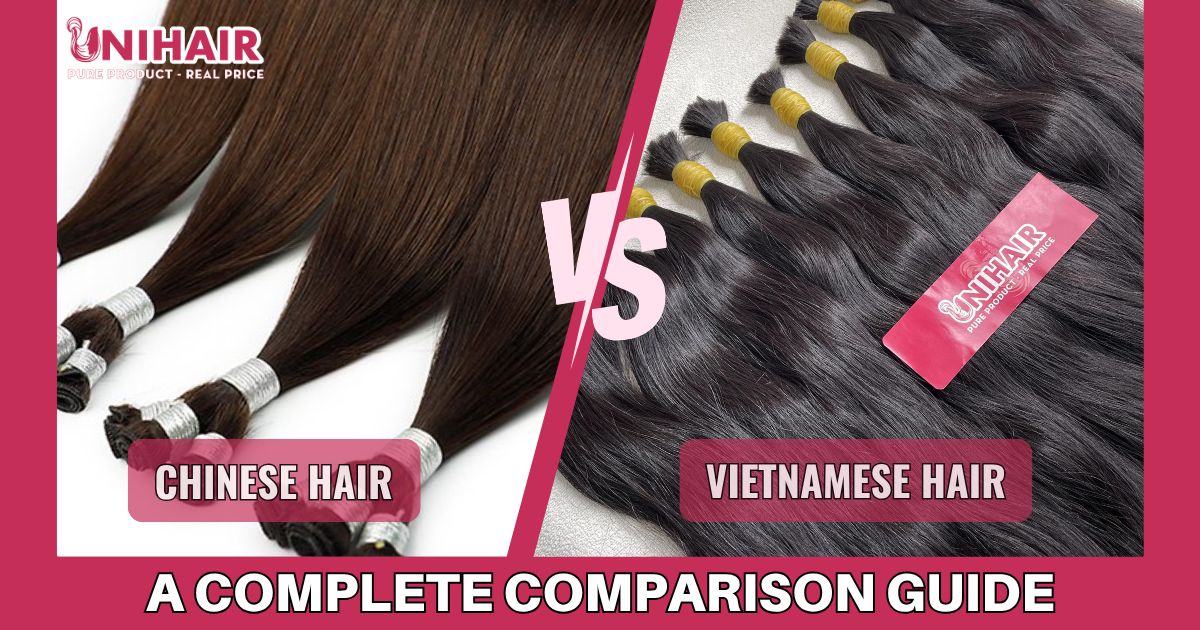Vietnamese Hair vs Chinese Hair: A Complete Comparison Guide
Vietnam and China have recently become two of the leading sources for hair imports. Deciding which wholesale hair supplier to choose can be tough. Unihairvn will show you a comparison to Vietnamese hair vs Chinese hair so that you can make the best decision.
Things to Know about Vietnamese Hair Vs Chinese Hair
The growing popularity of human hair extensions in recent years has sparked ongoing comparisons between Vietnamese hair vs Chinese hair. Both countries are major exporters of human hair, and their products are often promoted as high-quality. Still, it’s important to note some key distinctions between the two.
Unfortunately, there’s a lot of conflicting information online. Some sources claim Vietnamese hair is the best in the world, while others argue that is just as good. In general, Vietnamese hair is often seen as higher quality, but it usually comes at a higher price. On the other hand, Chinese hair is more affordable but doesn’t always have the same reputation for quality.
With so many mixed opinions out there, it can be hard to know which type of hair to trust. That’s why this blog aims to break it all down clearly and accurately, so you can better understand the differences and choose the option that best fits your needs.
Differences Between Vietnamese Hair Vs Chinese Hair
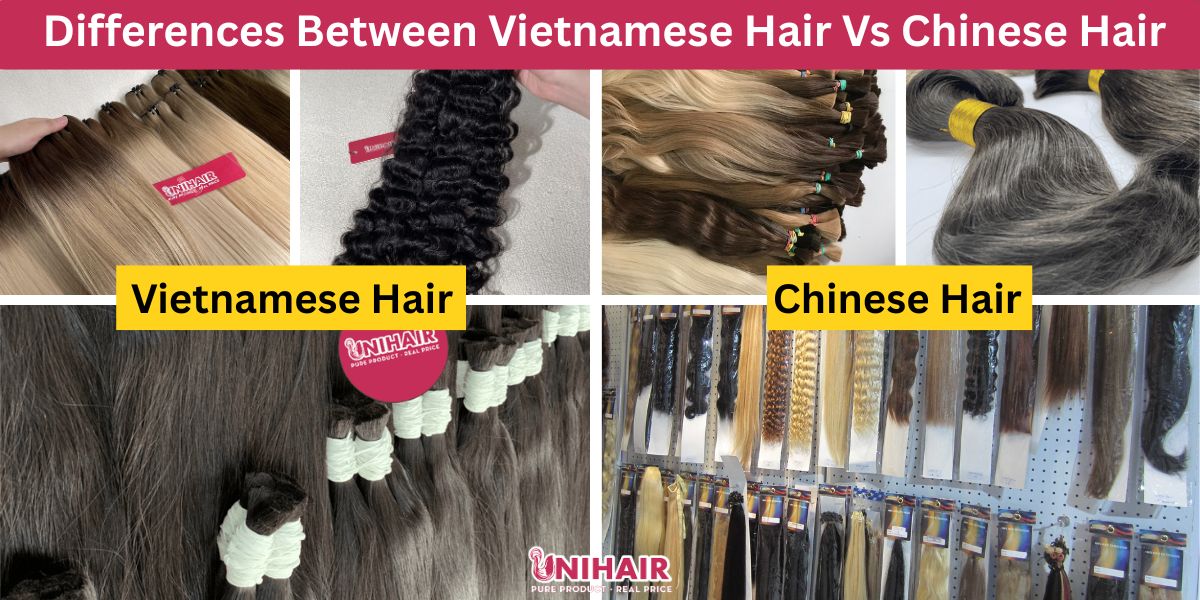
Have you ever wondered: “Is Vietnamese hair good?”, “Is Chinese hair good?”, or “Vietnamese hair vs Chinese hair which is better?”. If you have, please take a look at the following criteria to have a clearer view of these two.
The hair source Vietnamese hair vs Chinese hair
Be aware that hair origins are sometimes mislabeled, so it’s important to ask about how the hair is sourced and processed before buying. Here’s a quick breakdown of Vietnamese vs. Chinese hair.
Vietnamese hair
Vietnamese hair comes from donors, most of whom are women living in the northern mountainous regions. They care for their hair using natural methods and avoid harsh chemicals, making the hair strong, healthy, and easy to style.
Chinese hair
Chinese hair typically comes from two sources:
- Local donor: While hair from Chinese women was once common, it’s becoming rarer as urban living increases.
- Imported hair: Much of the hair is sourced from countries like India, Bangladesh, Cambodia, and Pakistan. A large portion includes “hairballs” from India – tangled hair collected from waste. This type is cheap but often contains debris, has inconsistent cuticle alignment, and tangles easily.
If ethical sourcing matters to you, Vietnamese raw hair is a safer choice, as it’s collected directly from donors. Still, always do your research to ensure you’re buying high-quality, reliable products.
The scale production
One key difference between Vietnamese and Chinese hair lies in how each country produces it.
Vietnamese hair factories
Vietnamese hair factories are typically smaller in scale, prioritizing quality rather than mass production. There are around 30-40 factories, with most other suppliers being trading companies.
Many are family-run businesses located in traditional craft villages. Each factory typically employs 80-150 skilled workers. While their technology isn’t the most advanced yet, manufacturers are steadily investing in better equipment.
Hair is usually made fresh for export, ensuring strong, healthy, and high-quality strands. Although Vietnamese hair is not produced in massive quantities, it stands out for its consistency and craftsmanship.
Chinese hair factories
China’s hair industry is massive and highly industrialized, with around 300 to 400 factories producing in large volumes daily. Chinese factories have cutting-edge machines and fast turnaround times, orders can be shipped almost immediately.
Each factory employs 150-300 workers, but much of the work is machine-driven, so the skill level of workers is generally lower than in Vietnam.
Chinese hair often undergoes heavy chemical processing, which can impact long-term quality despite its polished appearance.
China excels in large-scale, fast production, whereas Vietnam emphasizes quality and freshness. If you’re choosing between the two, consider whether you value high-volume production or ethically sourced, long-lasting hair.
Differences in roll bundles
One noticeable way to distinguish between Vietnamese and Chinese hair is by the way the hair bundles are tied and rolled. Hair manufacturers in both countries use different rolling methods, making this a clear visual difference.
Chinese hair factories typically roll each bundle into a round shape, while Vietnamese hair factories tend to roll their bundles into an oval shape.
Hair quality Vietnamese hair vs Chinese hair
When comparing Vietnamese and Chinese hair, quality is key. Hair quality depends on factors like genetics, health, and care routines.
Vietnamese hair
Vietnamese hair is known for its smooth, silky texture and natural dark color, ranging from straight to wavy. Thanks to a healthy lifestyle and the use of herbal hair care (like lemongrass and grapefruit), Vietnamese hair is strong, durable, and can last up to five years.
It’s also easy to style, whether curling, dyeing, or straightening, the hair holds up well and retains its natural look. As a result, it’s often used for premium hair extensions.
Chinese hair
Chinese hair quality varies, as much of it comes from mixed sources, including hairballs from countries like India. While Chinese factories use advanced technology to create attractive products, much of the hair is chemically processed.
It may look great at first, but it tends to lose quality quickly, often within a few months. The texture is typically thinner, coarser, and more fragile, making it less durable and harder to restyle without damage.
Chinese hair may be more affordable, but Vietnamese hair often offers better texture, strength, and longevity. Still, preferences vary, so it’s important to communicate your needs clearly with your supplier to find the best fit for you.
Hair price Vietnamese hair vs Chinese hair
Cost is one of the key factors to consider between Vietnamese and Chinese hair. Read on to see how they stack up.
Vietnamese hair
Vietnamese hair is known for its high quality at reasonable prices. Thanks to healthy, natural hair sources, it’s also very durable – lasting anywhere from 2 to 10 years with proper care. Prices typically start at around $8.90 per bundle, which many consider fair for the quality offered.
Chinese hair
Chinese hair is widely available and produced on a massive scale, which keeps prices low. With advanced technology and cheap labor, Chinese hair is affordable and visually appealing at first. However, many vendors note that it tends to tangle and shed quickly, which raises concerns about long-term value despite the low upfront cost.
Vietnamese Hair Vs Chinese Hair Pros and Cons

When deciding between Vietnamese and Chinese hair, it’s important to consider the advantages and drawbacks of each. Here are the main differences to guide you in making the right decision.
Vietnamese hair
Pros:
- High-quality: Vietnamese hair is well-known for its durability, density, and resilience, making it a top choice for those seeking long-lasting hair extensions.
- Soft and silky texture: Known for its naturally soft and smooth feel, Vietnamese hair blends seamlessly with your own, offering a natural, elegant look.
- Low shedding: Compared to other hair types, Vietnamese hair sheds minimally, resulting in longer-lasting extensions with less upkeep required.
Cons:
- Scarcity: Vietnamese hair is not as widely available as other varieties, which can make it harder to find and typically comes with a higher price tag.
- Prone to tangling: Although shedding is minimal, Vietnamese hair may be prone to tangling. Extra care during brushing and styling is recommended to maintain its quality.
Chinese hair
Pros:
- Budget-friendly: Chinese hair is typically more affordable than other types, making it an excellent choice for those looking for quality extensions at a lower cost.
- Thick and durable: Known for its thickness and strength, Chinese hair can handle frequent styling and wear, providing long-lasting use.
- Styling flexibility: Chinese hair is simple to work with, making it ideal for creating a variety of hairstyles and looks.
Cons:
- Tangles easily: This hair type is more prone to tangling, requiring extra care and regular maintenance to keep it smooth and manageable.
- Higher shedding: Chinese hair may shed more than other varieties, which could lead to shorter lifespan and the need for more frequent replacement.
- Sensitive to damage: It can be more susceptible to damage from heat styling and chemical treatments, so gentle handling and protective products are recommended.
To sum up, both Vietnamese and Chinese hair offer unique benefits and drawbacks. The best choice depends on your personal needs, preferences, and how you plan to use the hair.
Vietnamese Hair Vs Chinese Hair: Which One Should You Choose?
Both Vietnamese and Chinese hair have their own pros and cons. To make the best choice, consider your intended use, how quickly you need the product, and your budget.
There’s no one-size-fits-all answer to which is better – it really depends on your specific needs.
If you’re looking for speed, large quantities, and low prices, Chinese hair could be a good fit for your business. However, if you prioritize quality and want genuine, long-lasting hair extensions, Vietnamese hair is the better option.
Vietnamese hair is also a great choice for beginners in the hair business who want to start with authentic products. In contrast, concerns around counterfeit goods are still common in the Chinese market.
Vietnamese Hair Vs Chinese Hair Which Is Better?
Vietnamese bone straight hair is widely regarded as higher in quality and more durable compared to Chinese bone straight hair. It is known for its thicker strands and extended lifespan. In contrast, while Chinese bone straight hair may feel softer, it generally lacks the same level of durability.
Top 3 Vietnamese Hair Vendors
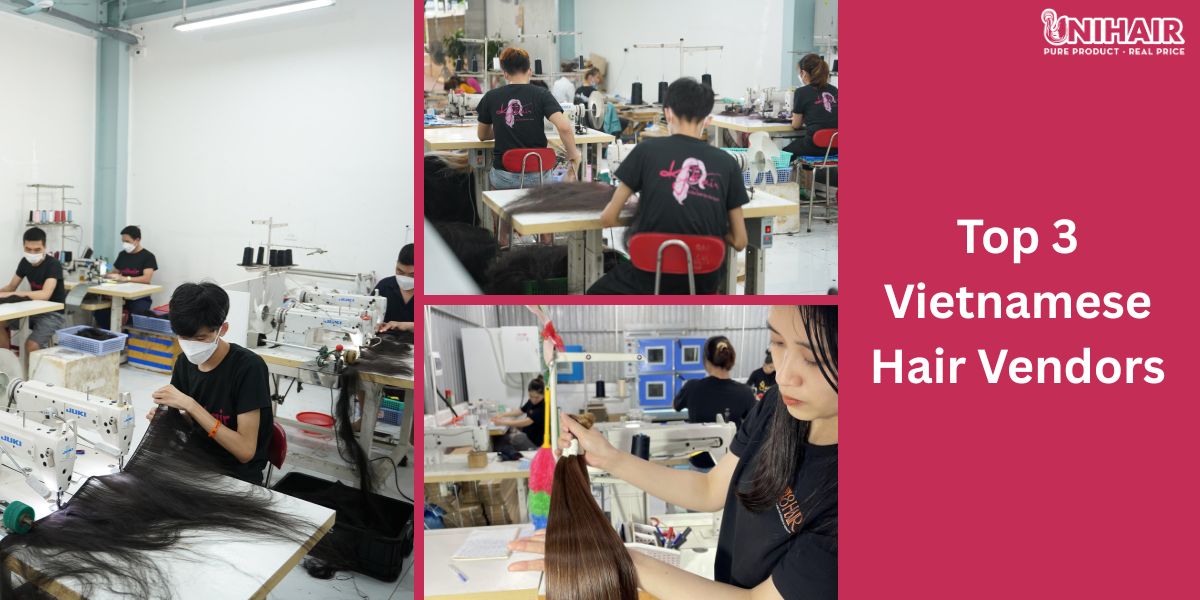
Unihairvn
Unihairvn is a trusted global supplier of 100% natural Vietnamese raw hair, partnering with clients in the UK, Brazil, France, Germany, and more. The hair is ethically sourced from highland women and meets ISO standards for quality and sustainability. Each product reflects artisan-level care and dedication.
Contact:
- Website: unihairvn.com
- WhatsApp: +84 905 97 1188 (Mr. James – CEO)
- Email: wholesale@unihairvn.com
KFhair
KFhair is one of Vietnam’s leading hair suppliers, offering premium virgin and remy hair at affordable prices. Ethically sourced from mountain communities, the hair is 100% natural and can last 2-10 years. KFhair serves both wholesalers and individuals with customized solutions and competitive rates.
Contact:
- Website: kfhair.com
- Hotline: +84 974 472 711
- Email: wholesale@kfhair.com
8Hair
8Hair provides high-quality raw Vietnamese hair that’s ethically collected and minimally processed. Known for strict quality control and customer satisfaction, they maintain a large inventory and offer factory-direct pricing- 30-40% cheaper than many competitors, especially popular in South Africa.
Contact:
- Website: 8-hair.com
- Hotline: +84 898 600 954 | +84 795 538 466
- Email: wholesale.8hair@gmail.com
Top 3 Chinese Hair Vendors
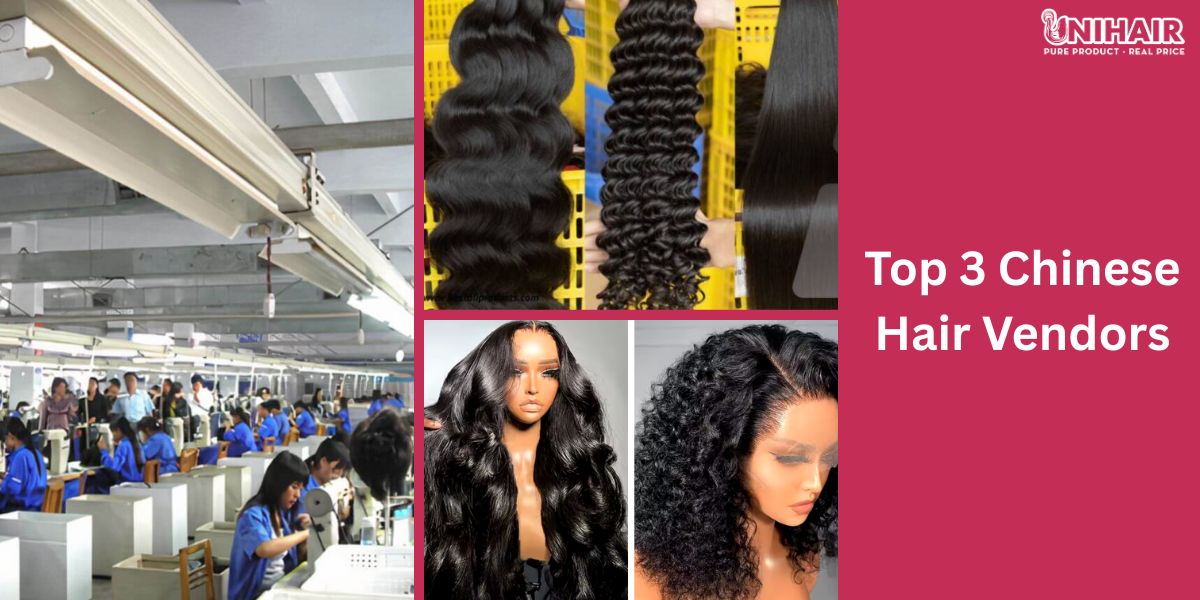
Guangzhou Glamor Hair Products
Based in Guangzhou with a 10,000+ m² factory in Anhui, Glamor Hair is a leading Chinese hair supplier. With over 100 staff and 15+ skilled technicians, they specialize in 100% human hair across various styles – straight, wavy, and curly. All products are certified and trademarked for authenticity.
Contact:
- Address: Room 6108, 222 Guangyuan West Road, Guangzhou, Guangdong, China
- Phone number: +86 136 3235 0526
Guangzhou Jingchen Beauty Hair
Jingchen is a trusted name in both local and global markets, with headquarters in Guangzhou and five retail branches. They offer 100% human hair sourced from Brazil, Peru, and Europe. Products are fully customizable by material, color, and size, with a well-stocked factory ensuring wide selection and availability.
Contact:
- Address: 1036, Longtou Market, 222 Guangyuan West Road, Guangzhou, Guangdong, China
- Company website: https://www.exporthub.com/guangzhou-jingchen-beauty-hair
Henan Fedu Industrial
With 25+ years in the industry, Henan Fedu is a veteran hair supplier operating from a 30,000 m² facility. They sell lace wigs, extensions, closures, and more via platforms like Alibaba and Amazon. Known for a large ready-to-ship inventory, they also offer fast custom orders to meet diverse client needs.
Contact:
- Address: 3rd Floor, Cross-Border E-Commerce Industrial Park, High-Speed Railway East Station Opposite, Xuzhou Road, Tianbao Road, Xuchang, Henan, China
- Website: https://yeswigs.en.alibaba.com/?spm=a2700.icbuShop.88.18.6e8f5bc1A2mjRg
Conclusion
When it comes to hair extensions, Vietnamese and Chinese hair stand out for different reasons. Vietnamese hair is prized for its high quality, natural texture, and ethical sourcing. On the other hand, Chinese hair is favored for its variety of colors, textures, and affordable pricing. Ultimately, the right choice depends on your preferences and business needs.
We hope the Vietnamese hair vs Chinese hair comparison in this article helps you make a confident, informed decision. If you’re looking for a reliable Vietnamese wholesale hair vendor, don’t hesitate to shop on Unihairvn or contact us for more information.
